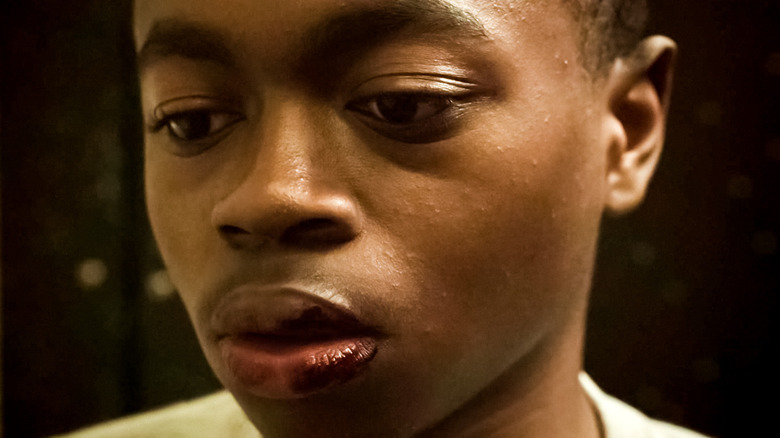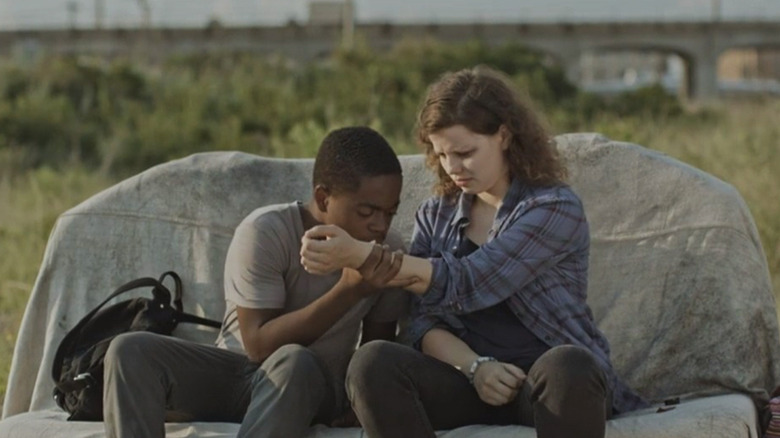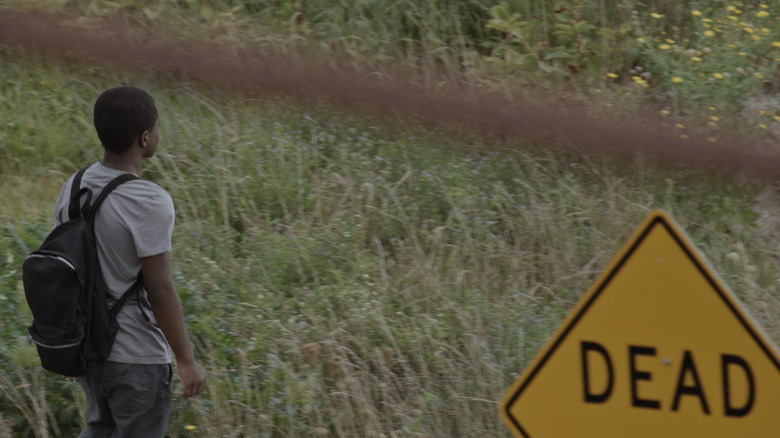Year Of The Vampire: The Transfiguration Brings Blood-Sucking Down To Earth
(Welcome to Year of the Vampire, a series examining the greatest, strangest, and sometimes overlooked vampire movies of all time in honor of "Nosferatu," which turns 100 this year.)
As a forever fan of fellows with fangs, there's little I won't watch as long as vampires are involved. In my quest to consume all things vampire, there have been disappointments, joys, and hidden gems. The 2016 indie vampire movie "The Transfiguration" is definitely in the third category. It's one of those movies that I just can't get out of my head — not that I would want to. While it is not a traditional vampire film (there are no supernatural elements), it is a haunting and well-executed homage to its predecessors that is sure to leave a lasting impression on viewers.
What It Brought to the Genre
With "The Transfiguration," writer-director Michael O'shea offers a thoughtful and unconventional take on the vampire genre. The protagonist is a quiet, teenaged boy named Milo. He is something of an outcast in the gang-infested community that he resides in with his couch-bound older brother — a young war veteran and Milo's only surviving family member. When Milo is bullied by the gang that plagues his neighborhood, he does nothing to fight back, even as they escalate their harassment beyond calling him a "freak" to such charming acts as holding him down and urinating on him.
Milo's desire to escape the unhappy circumstances of his life manifests in an unhealthy, almost scientific obsession with vampire media and the concept of vampirism itself. His unwillingness to defend himself against the violence he endures stands out in stark contrast to the horrifying way his vampire escapism plays out. Despite his meek disposition, Milo is a serial killer with vampiric aspirations. He keeps a detailed journal in which he has compiled his own rules for vampirism, complete with a "feeding" schedule. When the time comes, Milo sets aside time to stalk, kill, and drink the blood of whoever is unlucky enough to be chosen. At first, his victims are less sympathetic — we don't know much about them, but we are learning about Milo, so it's easier to brush off the killings.
Eventually, Milo meets a troubled girl his age named Sophie who moves into the same apartment complex he shares with his brother. Despite a rough start, the two develop a close relationship, becoming each other's escape from the unfortunate circumstances that color their existence. Milo's involvement with Sophie causes him to falter in his commitment to his vampire activities. He misses his scheduled feedings and begins to confront the morality of his choices in a way that he was able to avoid before. As time passes, his acts of violence and complicated feelings toward Sophie become increasingly frightening until he is forced to make a decision about who he is and who he wants to be.
Why I Love It: It's Well Done, Thoughtful, and Relatable
There are several reasons why "The Transfiguration" immediately became one of my favorite vampire movies. The story is compelling, and the characters are realistic. O'Shea is clearly a fellow fan of the vampire genre, and his love and knowledge of it is apparent throughout the film, particularly when we see Milo's collection of vampire media, his own set of personal rules for vampirism, and the conversation he has with Sophie about "Twilight" after they watch "Nosferatu."
Another thing that makes me love "The Transfiguration" is that the violence is graphic and unflinching, but it is not excessive. Although it may sound strange for a vampire and horror fan to say, I am not a big fan of excessive gore. Depictions of violence are to be expected, but I prefer them to be used effectively (if not sparingly), and "The Transfiguration" strikes the perfect balance of using its "blood and guts" visuals to enhance the story rather than completely leaning on them for nothing other than shock value. It's just a very thoughtful film in that way, and many others. Everything is done with clear intentionality, and it's all done quite well.
As a Black horror fan, I'm also happy whenever I see Black protagonists in horror who don't exist solely to be someone else's one-dimensional idea of what "Black" is. Race plays a role, but is more implicit than explicit, and it is not done so in way that is pandering or patronizing to the viewers. As in real life, race influences and shapes experiences, and there is one scene in particular where it certainly becomes more of an issue, but "The Transfiguration" is not about race. It is about Milo's journey from being a traumatized and detached teenager to confronting the circumstances that led him down the path he travels, forced to finally decide whether or not he wants to continue down it.
Like Milo, I'm also a Black person who has a (much healthier) interest in horror and vampires, and my interest did initially serve as a form of escapism. No, I didn't grow up in a rough area populated by gangs; instead, I lived a relatively privileged, semi-suburban life that came with its own set of unpleasantries and challenges as an introverted Black girl with interests and hobbies that often made me a target for harassment and bullying. Unlike Milo, I didn't fancy myself a vampire, cannot even stomach the thought of harming another human being unprovoked, and I did defend myself when necessary (sometimes violence is the answer, as upsetting a reality as that may be), but I empathize with certain aspects of his character and personality.
Simply put, I love sympathetic characters who do horrible things. It's just more entertaining than watching someone be 100% good or evil. I also love vampire movies, and I love when the things that scare me the most are presented in a way that will not allow me to avert my gaze even though I desperately want to.
All in all, fans of thoughtful horror movies and vampires — and perhaps anyone who enjoyed "Let the Right One In" (another personal favorite) — will likely enjoy "The Transfiguration" as much as I did.


